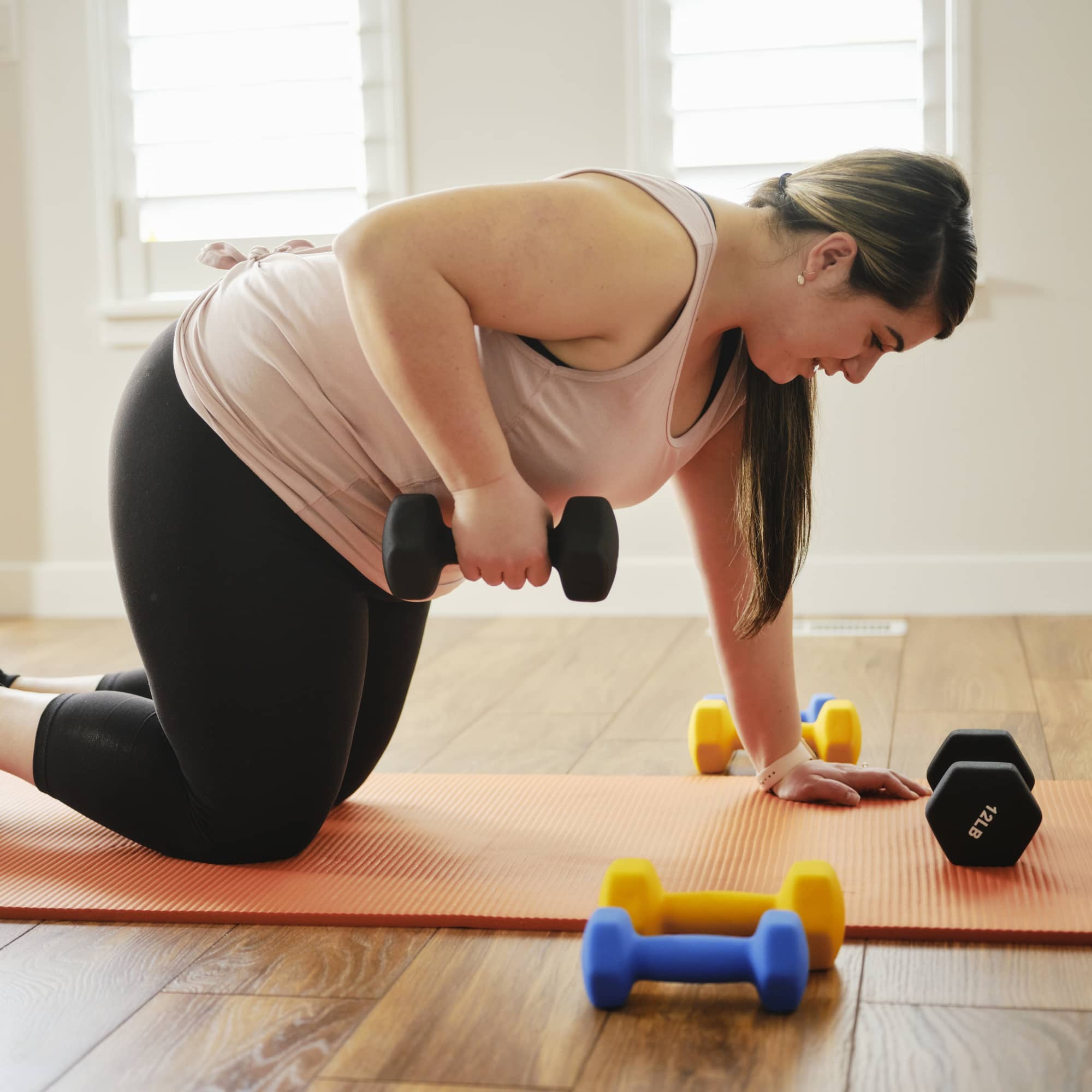
- POPSUGAR Australia
- Fitness
- Beginners: Here's How Long and How Often You Should Weightlift Each Week to Get Stronger
Beginners: Here's How Long and How Often You Should Weightlift Each Week to Get Stronger

Starting a new workout routine can be both exciting but also slightly daunting if you’re not sure where to begin. You may be tempted to do the most intense workout you saved on Instagram, but that’s not the best idea. Instead, you should first focus on nailing the core movement patterns and building a foundation of strength. We all have different goals and different genetic profiles which will impact how we train and the styles of workouts that we do, and there isn’t one perfect way to get started but the following advice can definitely help you out.
How Long Should Strength Workouts Be For Beginners?
“I suggest 45-minute to an hour sessions independent of your fitness level,” Holly Rilinger, NASM-certified, Nike master trainer, and creator of the Lifted program, told POPSUGAR. In her opinion, “This is the perfect amount of time to warm up, get a solid workout in, and cool down properly.” Rilinger recommends training for no longer than an hour because it’s enough time to get a quality session in without losing your motivation, she said.
Kellen Scantlebury, DPT, CSCS, the founder of Fit Club in New York City, recommends strength training for 30 to 45 minutes and using light to moderate resistance (Here’s guide on how to choose your weights.) “We want to make sure we can build a base level of strength and also allow for neuromuscular adaptations to take place,” he explained. Similar to Rilinger, Scantlebury said a 30- to 45-minute time frame won’t discourage you and will help you feel more encouraged to train consistently.
Related: These Are the 17 Exercises You Should Do to Get Stronger If You Don’t Have Weights
How Often Should Beginners Strength Train Per Week?
You may be motivated to go hard seven days a week, but Rilinger advises against doing so. If you’re new to strength training, Rilinger said to start with two to three total-body workouts a week. “This will give you plenty of time to recover while providing enough stimulus to change your body,” she explained. She prefers full-body workouts over isolating specific muscle groups because you’ll be able to perform more repetitions and train at a higher frequency to develop the basic movement patterns, she said.
“For beginners, I would start out with three days a week. This allows your body time to recover in between workouts, which is very important,” Scantlebury said. Instead of training back-to-back, he recommends taking a day of rest in between your workouts to help reduce the amount of muscle soreness you may experience and to also help your muscle fibers repair and grow back both bigger and stronger. When it comes to isolating muscle groups or doing full-body workouts, Scantlebury said, “This really depends on the client’s goals.”
Related: These Are the Best Exercises to Do on Your Much-Deserved Rest Day
If your goal is to lose body fat, he recommends focusing on total-body workouts because “This allows for the greatest amount of muscles to be used during each workout and allows for a high calorie burn during each workout.” If you’re trying to put on muscle or gain weight, Scantlebury recommends training specific body parts during each session. “This allows us to focus on specific muscle groups and gives each group the proper volume – the total amount of repetitions and sets – of work needed to grow,” he explained.
The Strength Exercises Every Beginner Should Know
You may be motivated to take on high-intensity exercises like plyo lunges and burpees, but before you do a single rep of either, you should master the basic strength movements. “I love the basics. I make sure my clients are highly proficient with their squat pattern, their deadlift pattern, their plank, and their overhead pressing pattern before moving on to more advanced movements,” Scantlebury said.
“The foundation of a strength training program should be squats (knee dominant), deadlifts (hip dominant), bench press (upper-body push), and rows (upper-body pull),” Rilinger explained. These aren’t the only four exercises you should do, as there are many variations to each movement pattern, but Rilinger recommends covering these essential movements patterns in every workout. If you aren’t comfortable creating your own training program or if you’d like to discuss your goals and how to achieve them with someone more experienced, Rilinger recommends working with a professional trainer. “A good trainer will teach you basic movement patterns and will know how to design progressive programs that will help you reach your goals,” she said. Conversely, “Uneducated trainers will show you creative moves that seem fun and innovative that do very little to change your body.”
In addition to mastering the basics, Scantlebury said to show up each day with a positive attitude. “If you are in a good mood and have a mindset to get your work in each day, you will succeed.” If you’re ready to get started strength training, check out this four-week program to get back in shape or this four-week plan to build muscle.

